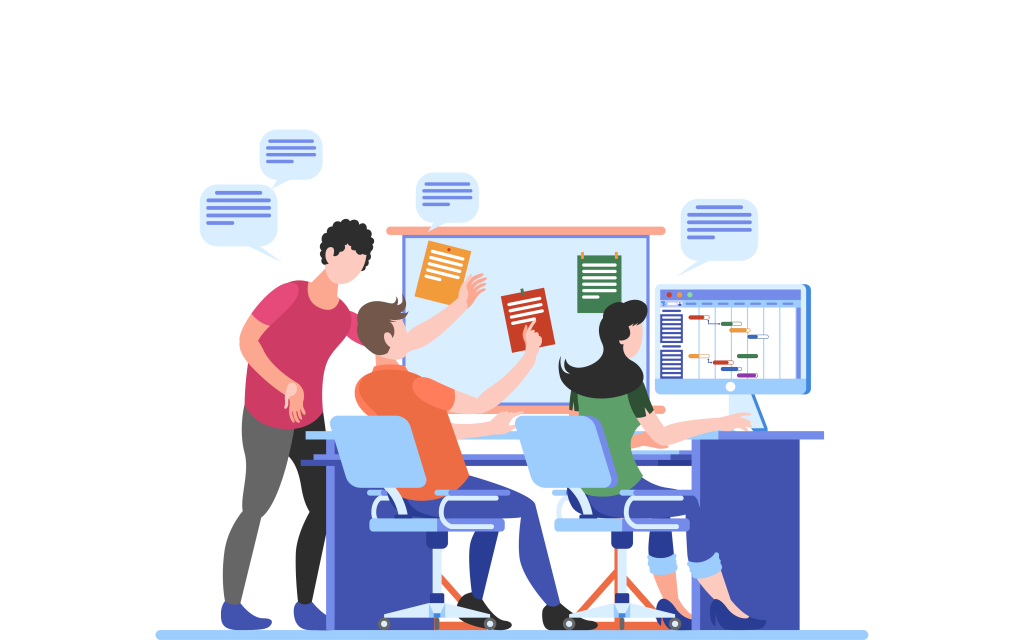Process of Technical Documentation
Technical documentation is about identifying and evaluating the requirements from the client’s side, as well as content planning and content organization. On the other hand, it consists of writing understandable information with the help of subject specialists, using whiteboards, and so on. The platform where the documentation is uploaded should be interactive, navigable, and have efficient search options. Quality assurance follows to improve accuracy and remove inconsistencies before the client gets to review the work and provide their recommendations. Documentation support includes the technical documentation review process and offering channels through which documentation is revisited even after patient delivery.

Process

Project Kick-off and Needs Assessment
- Information Gathering: Meeting with the client to note down the important details such as product features, target group, and the outcomes in mind which the client wants to achieve.
- Define Scope and Deliverables: Detailed explanation of the contents of specializations (User Manual, API Reference, etc.) and the format (electronics or printed).
- Content Inventory: First of all, check if there is already a document. If it does, look at whether it meets established standards, it satisfies different needs and it corresponds to the requirements nowadays.
Content Planning and Organization
- Structure and Flow: Firstly, putting a reasonable hierarchy of information that will start with the introduction and then move on to a much more detailed description.
- Task Analysis: Researching for these actions that are usually done by a user and place the content on the primary positions in the interface layout.
- Information Architecture: Improving the website’s navigation system, making it logical by using categories alongside headings, subheadings, and a thorough Table of Contents.


Content Creation - Expertise at Work
- Subject Matter Expertise: Letting the technical writers with writing experience and expertise have all the vital information of their client's problems.
- Clarity is Key: Making suggestions to use simple terminologies without technical slangs with better precise definitions for the technical terms that can be accessed through this tech support guide.
- Structure for Readability: Adding a variety of bullet points and brief paragraphs to make things easy to understand as the complex data will be simplified.
- Visual Appeal: Adding screenshots, charts, and flowcharts to provide additional explanations to make the document more visually appealing and interesting to make the user even more focused.
Building the Technical Documentation Platform
- Platform Selection: Collaborating with our customer to create a decision on a content deployment, a dedicated platform (content hosting solution), a Wikia, or an integrated site with the customer's website.
- User Interface and Navigation: Designing a user interface by applying everyday elements and a user-friendly navigation system that is visually appealing with no complications hence, easy for the user to access information.
- Search Functionality: Providing a search engine that the user would use to search for the precise subject in the comprehensive documentation at once saving him/her the time to go through the whole documentation.


Content Enrichment for User Delight
- Interactive Elements: On user demands, adding some interactive elements like code samples, expandable examples, or quizzes contingent on the scale and scope of the project.
- Downloadable Resources: A PDF version of the handbook along with checklists and quick reference sheets will be downloadable to deliver a hassle free offline experience.
- Version Control: Limiting the efforts to make epochs for a versioning system and to update history, just to make your customers comfortable.
Quality Assurance and Delivery
- Technical Accuracy: Establishing accuracy about whether the technical information included in documentation is verified or not.
- Style and Grammar Review: The "Style" consistency, spelling, and punctuation shall be checked and proofread rendering to the "Readability".
- Client Review and Feedback: Receiving regular client feedback per project modules from the iterative revisions process in the execution phase of the projects to meet clients’ expectations on time with quality final deliverables.


Post-Delivery Support and Maintenance
- Knowledge Base Integration: For a project in progress, to ease our client, thinking about the documentation having a separate integrated knowledge base which makes it possible for central access.
- User Feedback Mechanism: Giving a defined route where attendees can give their feedback as well as improvement ideas.
- Content Updates: Providing continuous maintenance including the documentation to ensure updates when new features or bug fix emerges.
FAQs
Frequently Asked Question
Our purpose is to build solutions that remove the barriers preventing people from doing their best work. This approach is at the heart of our services.
We encourage every team member to be a whole person. We have a flexible, high-trust environment that focuses on doing great work.
Yes, our purpose is to build solutions that remove barriers preventing people from doing their best work. This is central to our approach.
We increase social reach and productivity with our App Directory, which includes famous applications like Instagram and other web design tools.
Yes, we are a design studio founded in London that has expanded our services to become a multinational firm, offering comprehensive IT management services and solutions.
Get In Touch

